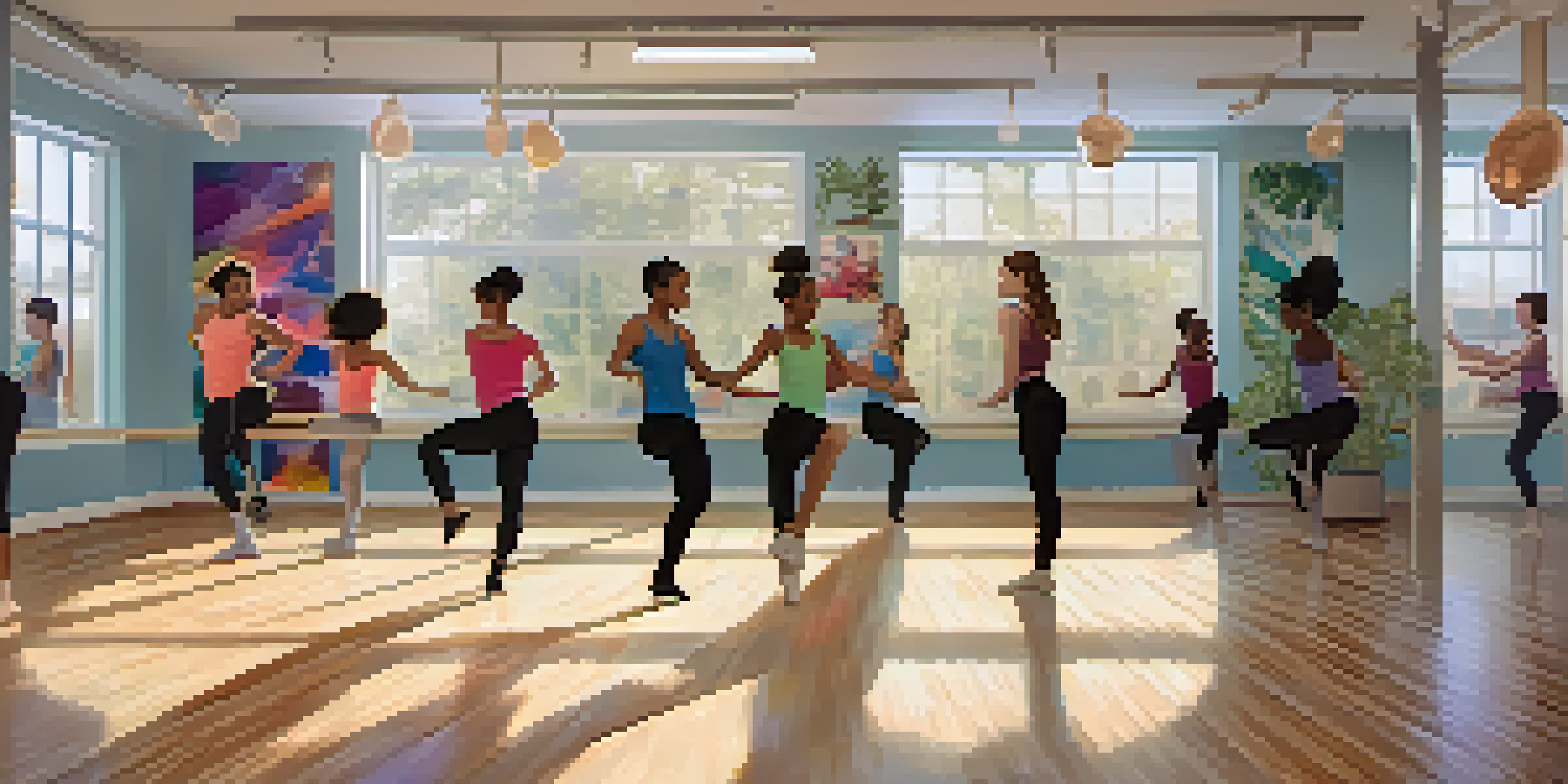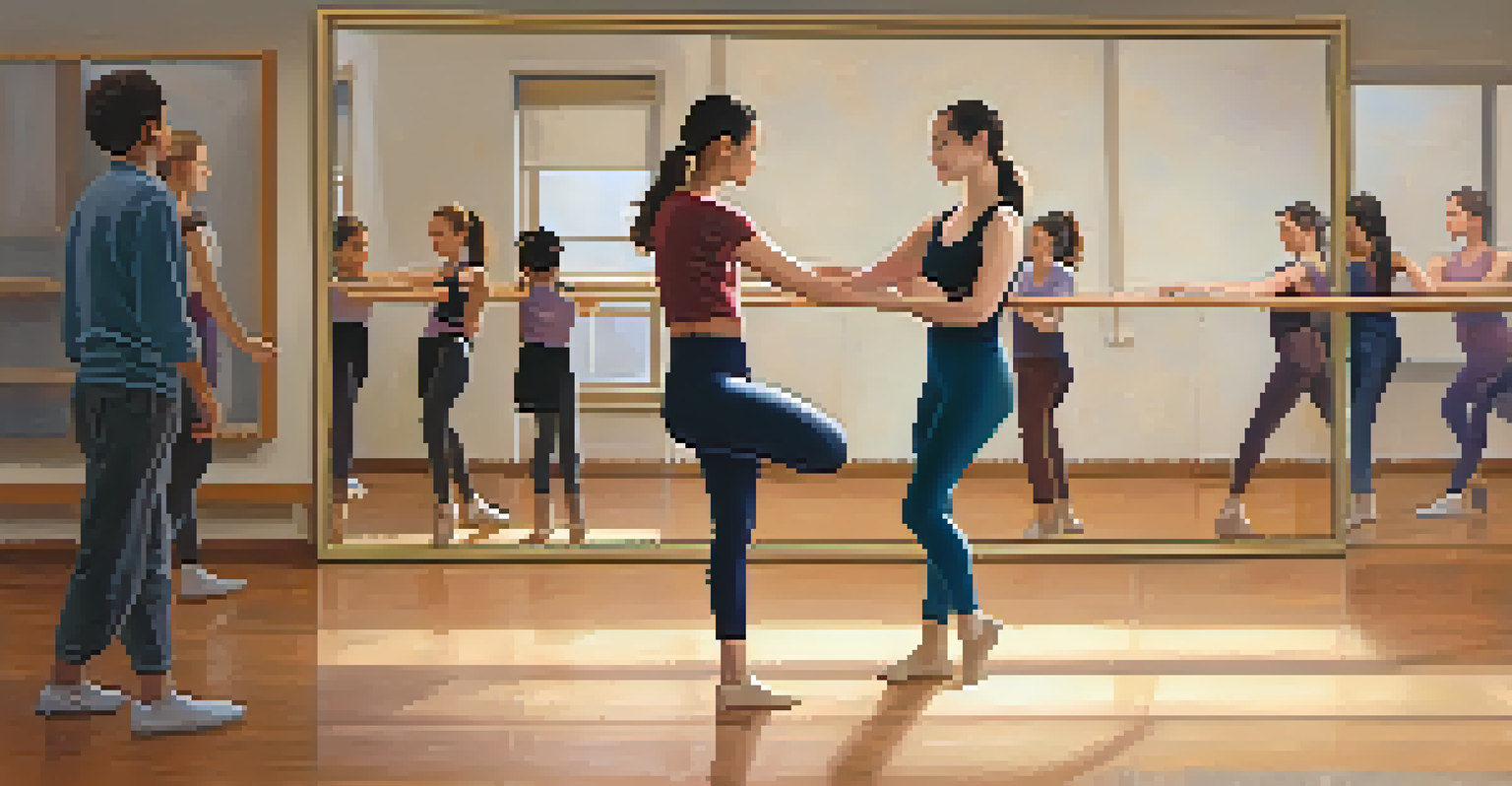Constructivist Approaches in Dance Pedagogy and Teaching

Understanding Constructivist Learning in Dance
Constructivist learning is grounded in the idea that learners build their own understanding and knowledge through experiences and reflections. In dance education, this approach encourages students to explore movement in a way that aligns with their personal experiences and creativity. Rather than simply replicating techniques, students are invited to discover their own interpretations and styles.
Education is not the filling of a pail, but the lighting of a fire.
This method resonates particularly well in dance, where expression and individuality are paramount. Just as a painter finds inspiration in their surroundings, dancers can draw from their life experiences to inform their movements. This empowers students, making learning more relevant and engaging.
Moreover, constructivist approaches foster a deeper connection between the student and the art form. When learners actively participate in the creation of knowledge, they are more likely to retain what they learn and apply it in future performances, leading to a richer educational experience.
Key Principles of Constructivist Dance Pedagogy
Several principles underpin constructivist dance pedagogy, including active learning, collaboration, and reflection. Active learning encourages students to engage in their dance practice by trying out new movements, experimenting with choreography, and making choices that resonate with them. This hands-on approach helps students better internalize the concepts being taught.

Collaboration is another crucial aspect, as students often learn from one another through group activities and peer feedback. When dancers work together, they share insights and perspectives, which can lead to innovative ideas and a stronger sense of community within the class. This camaraderie not only enhances learning but also builds lasting relationships.
Empowerment through Personal Expression
Constructivist learning in dance allows students to explore their unique interpretations and styles, making the learning experience more engaging and relevant.
Reflection is key in the constructivist approach, allowing students to think critically about their experiences. By discussing what worked, what didn’t, and why, students develop a deeper understanding of their personal growth and the intricacies of dance itself. It’s like a dancer looking in a mirror; the reflection offers valuable insights for improvement.
The Role of the Instructor in Constructivist Dance
In a constructivist dance classroom, the instructor shifts from being a traditional authority figure to a facilitator of learning. This means guiding students through their exploration rather than dictating every step. The role of the instructor becomes one of support, encouragement, and mentorship.
The only way to learn mathematics is to do mathematics.
By fostering a safe and open environment, instructors can help students feel comfortable taking risks and expressing themselves. This is especially important in a creative field like dance, where vulnerability can lead to breakthroughs in performance and personal expression. An instructor’s positive reinforcement can inspire students to push their boundaries.
Additionally, instructors are responsible for creating learning experiences that challenge students while also being accessible. They must strike a balance between providing structure and allowing freedom, enabling students to navigate their learning paths while still achieving key objectives in their dance education.
Integrating Technology in Dance Education
In today's digital age, technology plays a significant role in constructivist dance education. Tools like video recording and online platforms allow students to document their progress and share their work with a broader audience. This not only enhances their learning experience but also builds confidence in their abilities.
Using technology, students can analyze their performances and receive feedback in real-time, which is vital for growth. For instance, watching themselves dance can help them identify areas for improvement, similar to an athlete reviewing their game footage. This immediate reflection is invaluable in refining their skills.
Collaboration Enhances Learning
Working together in a supportive environment fosters innovation and community among dancers, enriching their educational experiences.
Moreover, online collaboration tools enable students to work together on choreography, even from afar. This fosters a sense of community and teamwork, as they can co-create dances and share ideas seamlessly. It’s a modern twist on the age-old practice of creating art together, bridging distances and differences.
Creating a Safe Space for Expression
A fundamental aspect of constructivist dance pedagogy is the creation of a safe space for student expression. In such an environment, students can explore their ideas and feelings through movement without fear of judgment. This safety is crucial for fostering creativity and innovation in dance.
When students feel secure, they are more likely to take risks in their performances and push their creative boundaries. It’s much like a child playing freely in a sandbox; they explore different shapes and structures without worrying about the outcome. This kind of freedom is essential for genuine artistic expression.
Instructors can promote this safe space by encouraging open dialogue and celebrating diversity in movement styles. By valuing each student's unique voice, they cultivate an inclusive atmosphere that enriches the learning experience for everyone involved. This not only nurtures individual growth but also enhances the collective creativity of the class.
Assessment in Constructivist Dance Education
Assessment in a constructivist dance framework differs significantly from traditional methods. Instead of solely focusing on technical proficiency or choreographic execution, assessments are more holistic, considering creativity, personal growth, and collaborative skills. This approach recognizes that dance is not just about the end product but also the journey of self-discovery.
Feedback is often formative, offering insights that help students improve as they progress. For example, instead of grading a performance strictly on technique, an instructor might provide feedback on how well a student conveyed emotion or utilized space creatively. This encourages students to focus on their artistic expression rather than merely ticking boxes.
Holistic Assessment Methods
Constructivist dance education emphasizes formative feedback and peer assessments, focusing on creativity and personal growth rather than just technical skills.
Peer assessments also play a vital role, allowing students to learn from one another and reflect on different perspectives. By engaging in constructive critique, students develop their analytical skills and gain a deeper appreciation for the art form. It’s about building a community of learners who support each other’s growth.
The Future of Constructivist Approaches in Dance
As the landscape of dance education continues to evolve, constructivist approaches are likely to become even more prevalent. With a growing emphasis on creativity and individuality, educators are recognizing the importance of adapting their teaching methods to meet the needs of diverse learners. This shift aligns with broader educational trends that prioritize student-centered learning.
The integration of technology will also shape the future of dance pedagogy, providing new avenues for exploration and collaboration. As virtual platforms become more mainstream, students will have opportunities to connect with peers and instructors around the globe, enriching their learning experiences in unprecedented ways.

Ultimately, the future of constructivist approaches in dance hinges on the commitment of educators to foster environments that empower students. By embracing flexibility, creativity, and collaboration, the next generation of dancers will not only hone their craft but also develop a profound understanding of themselves and the art of dance.